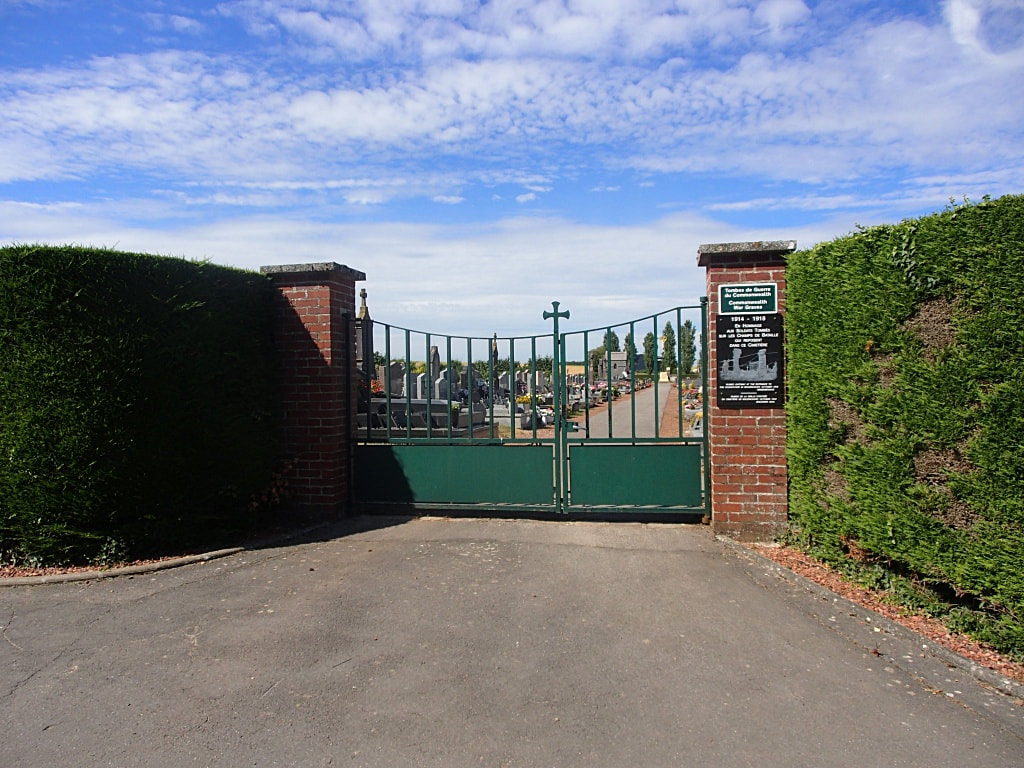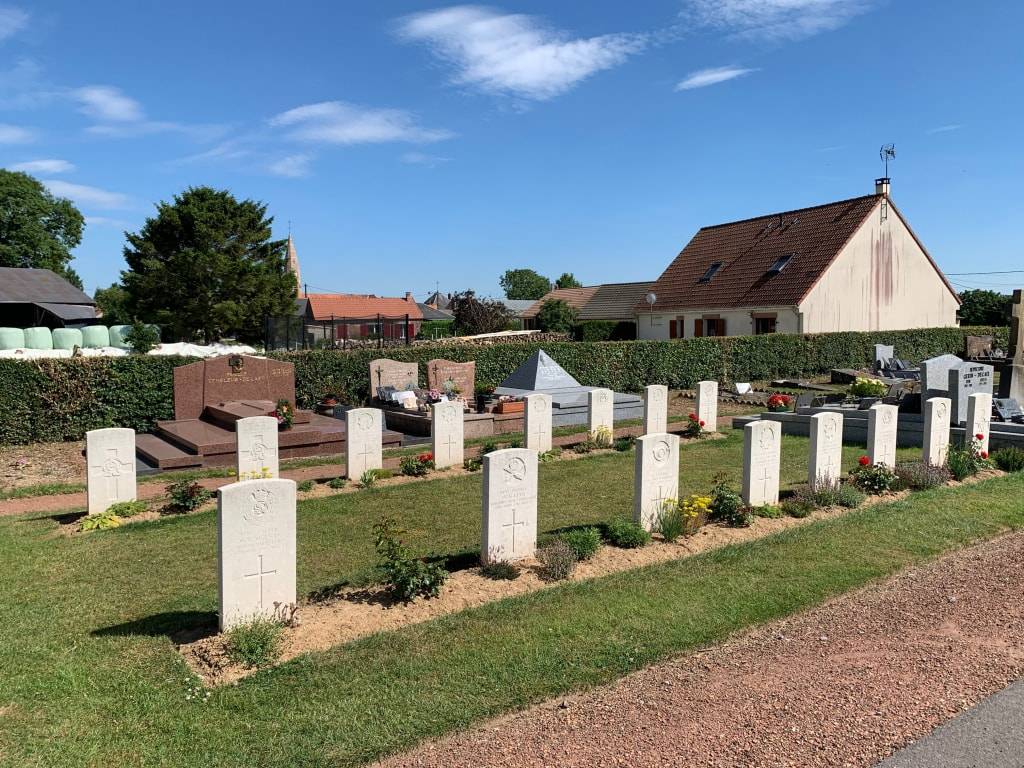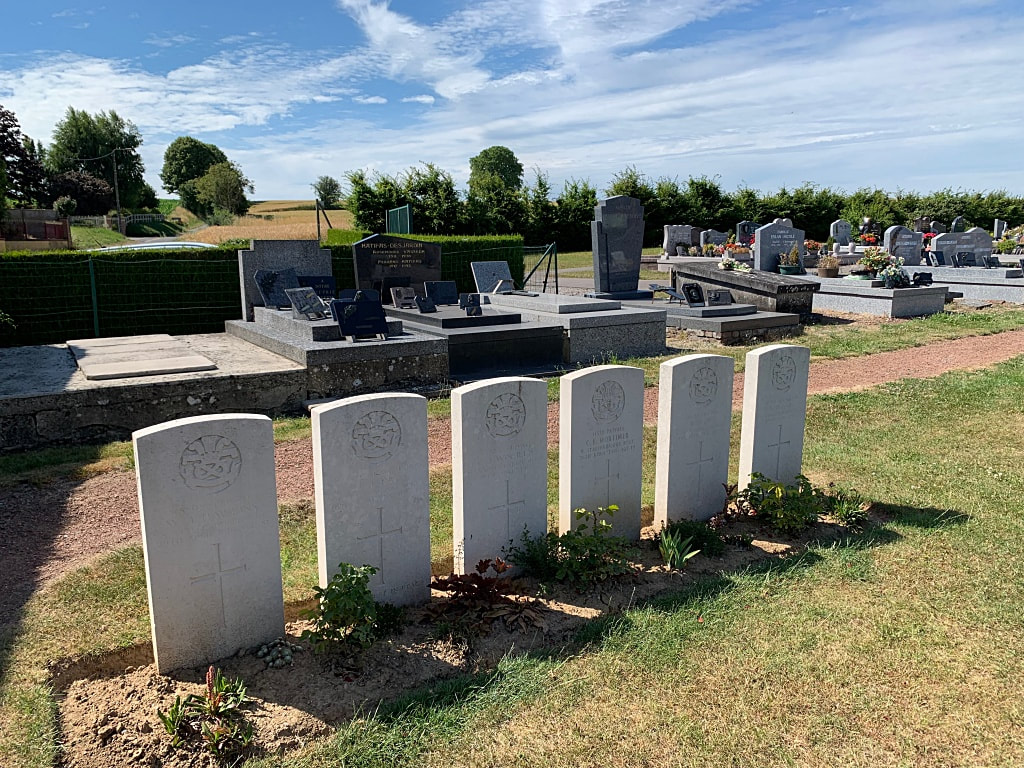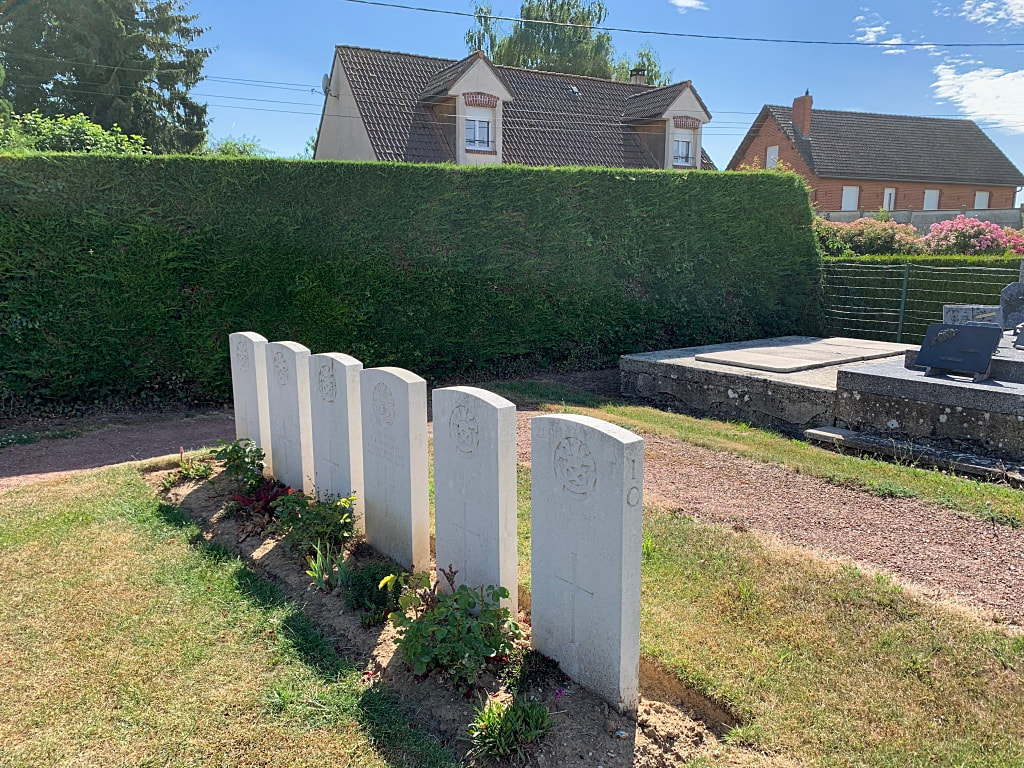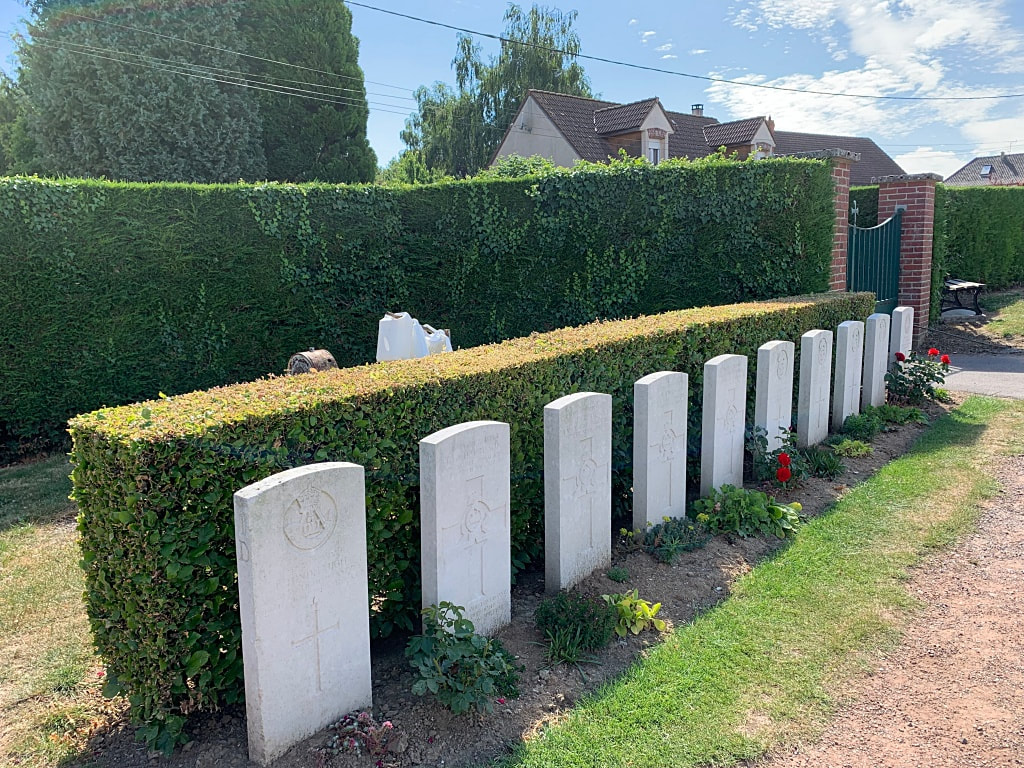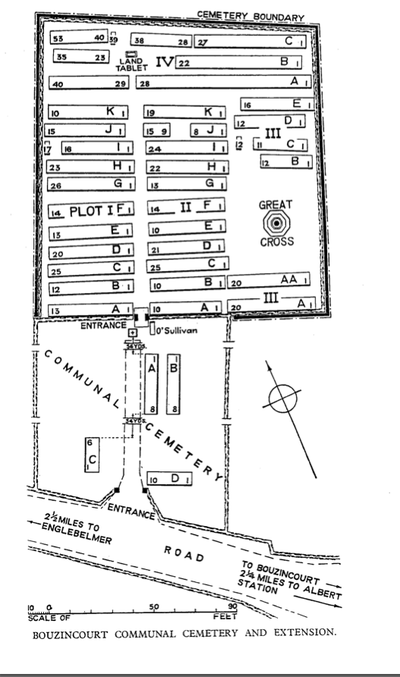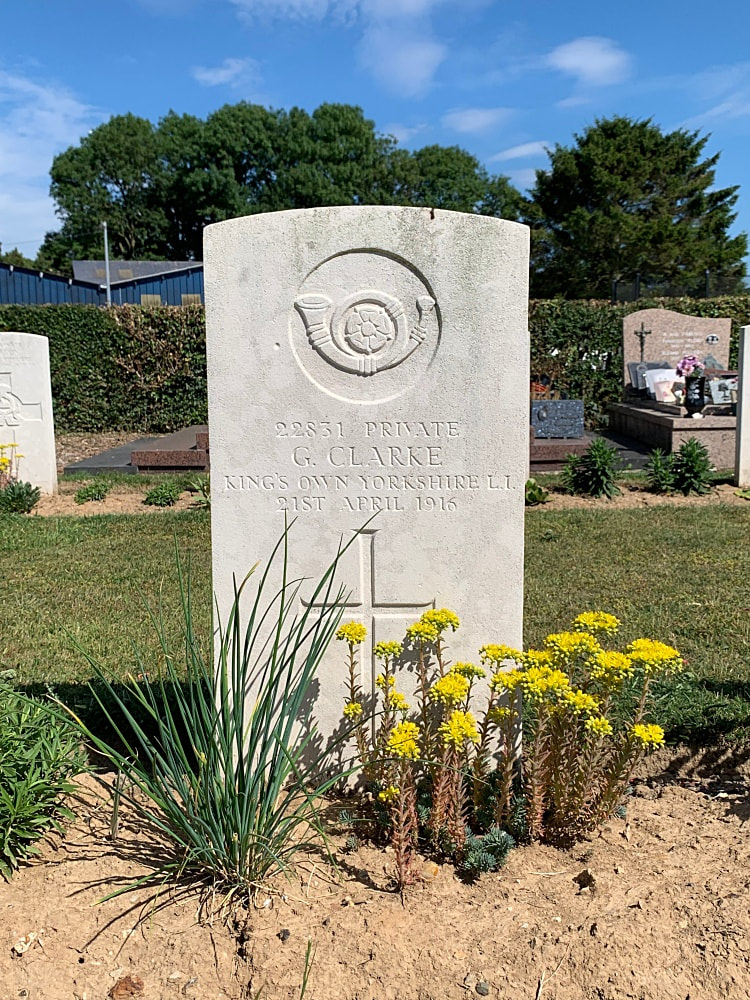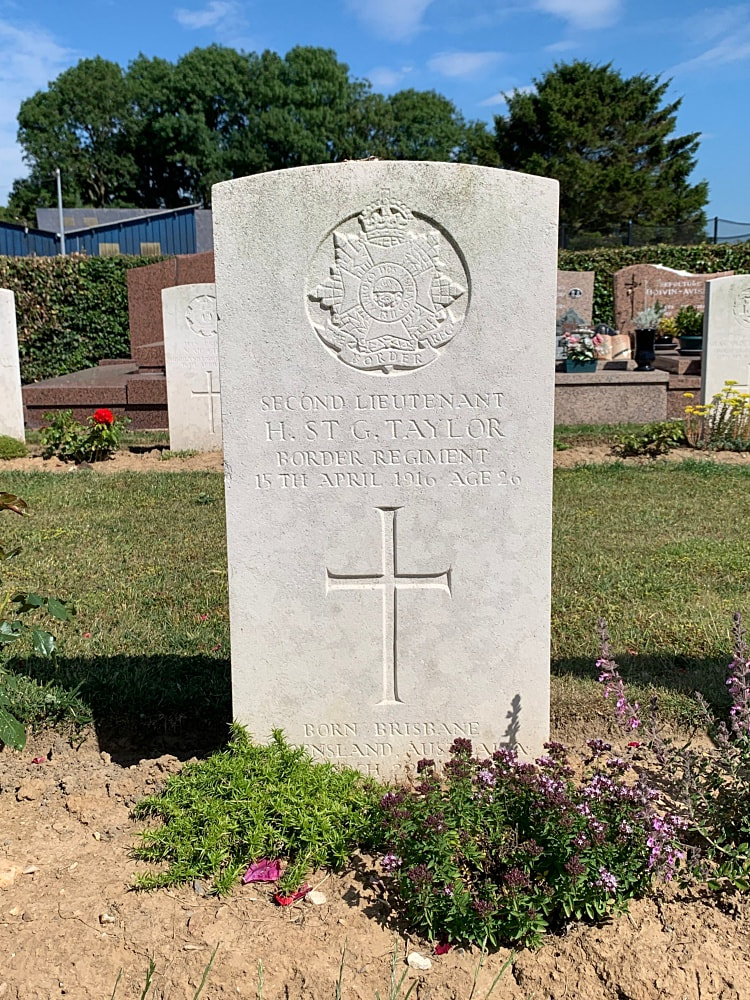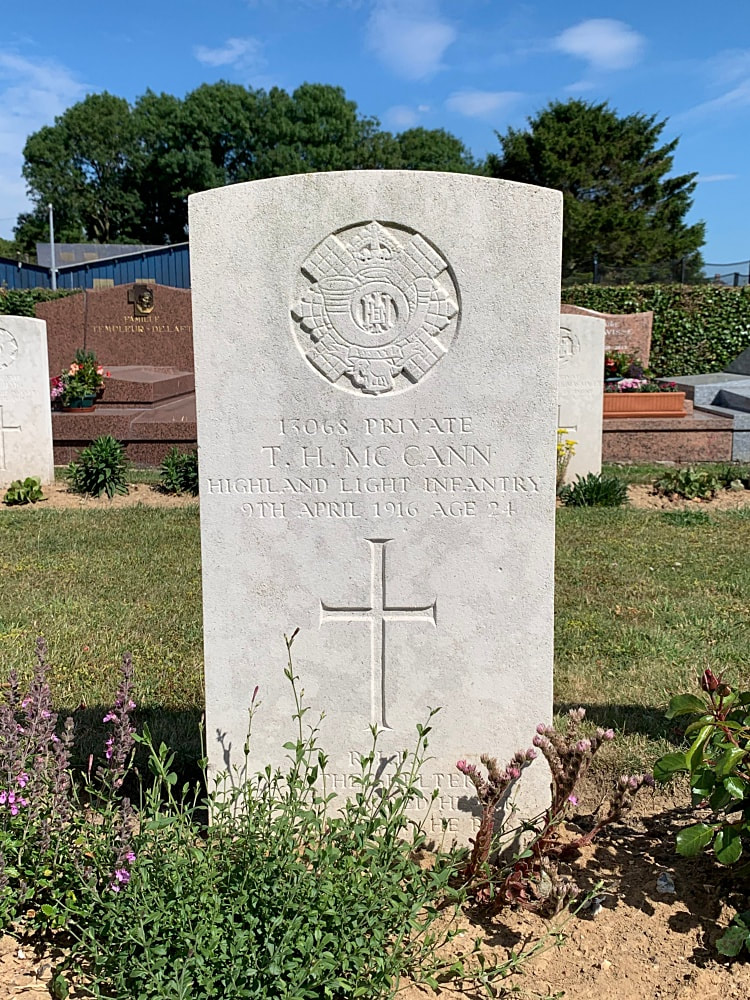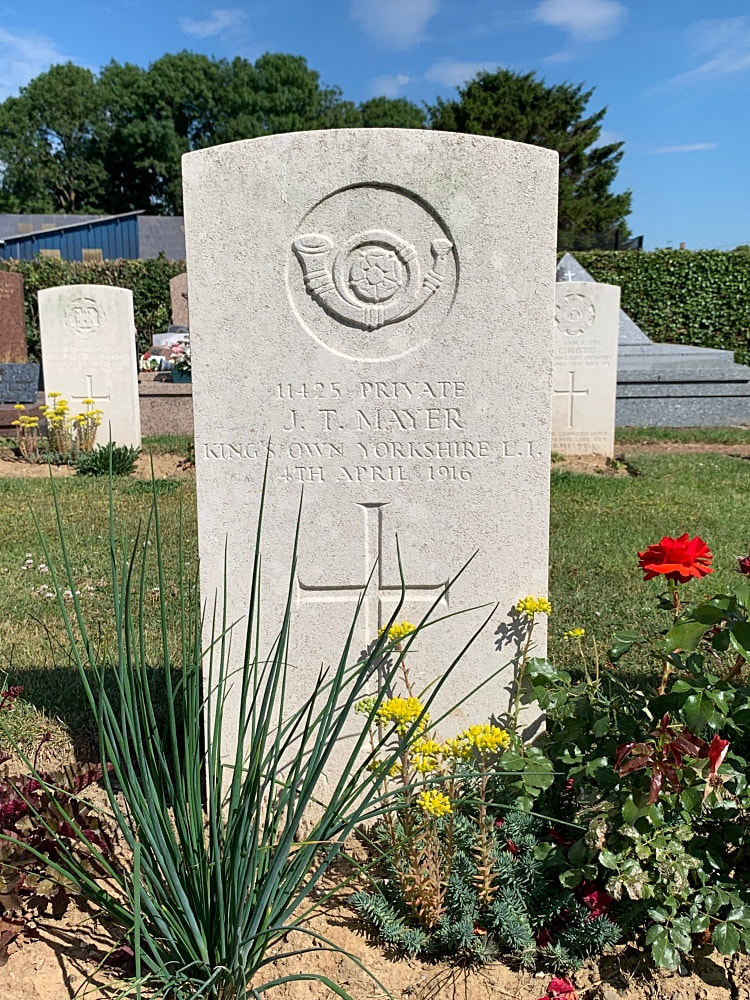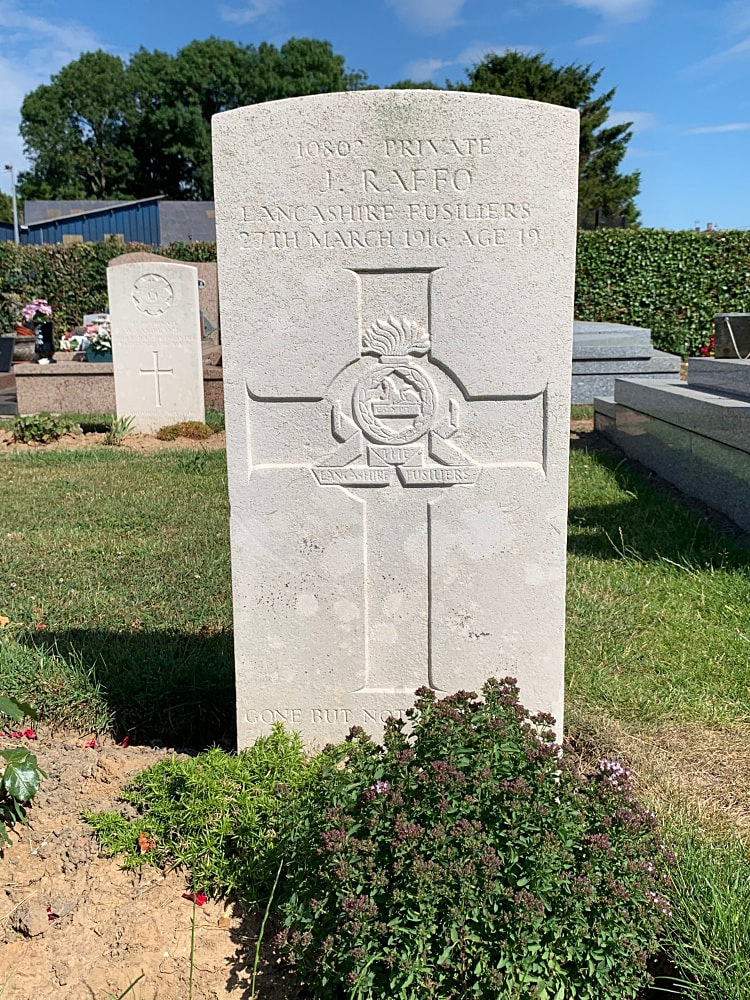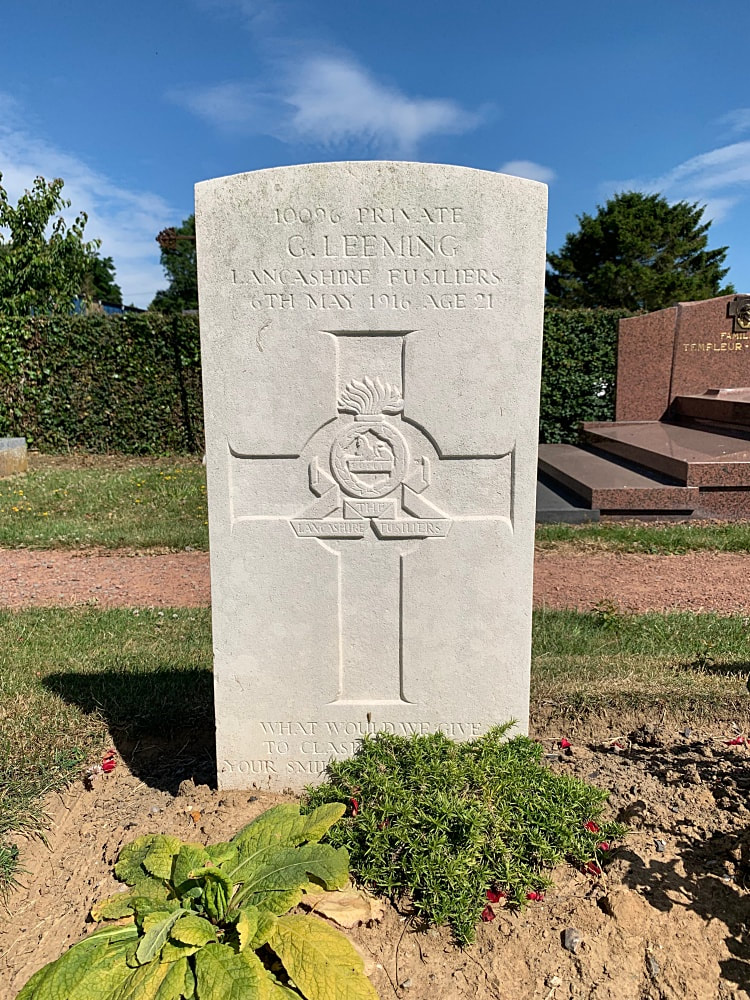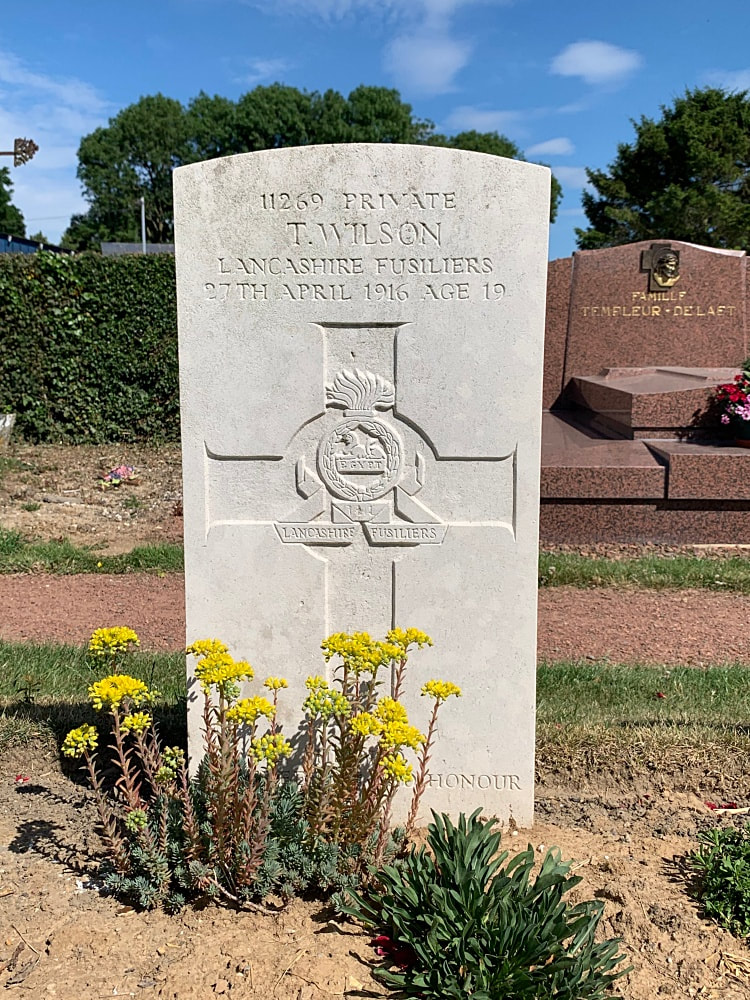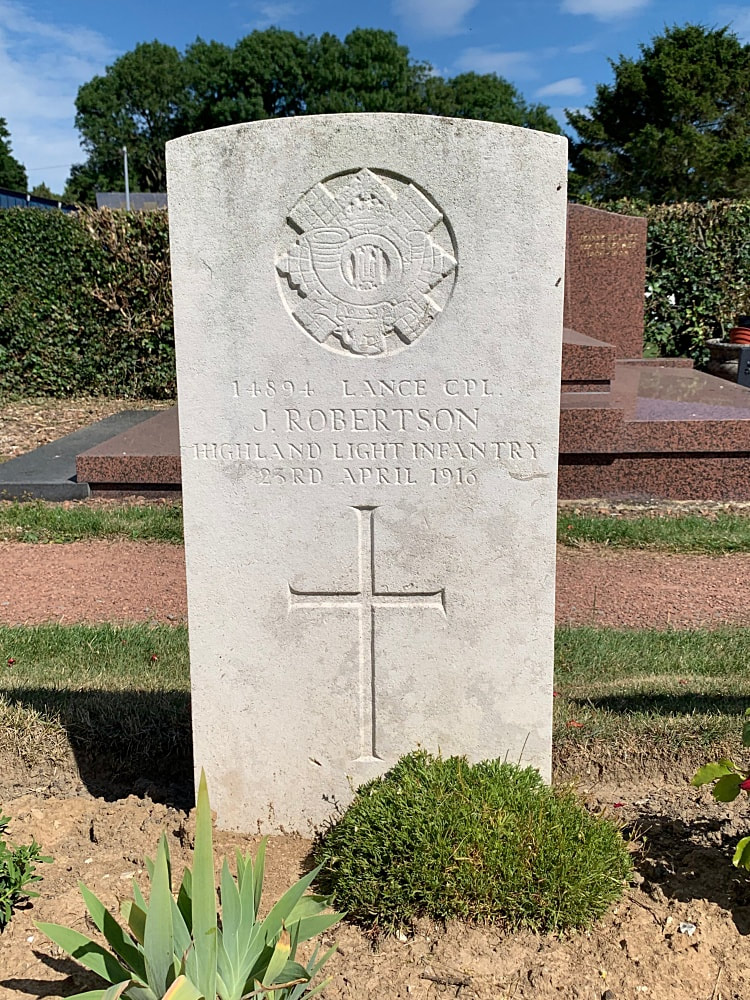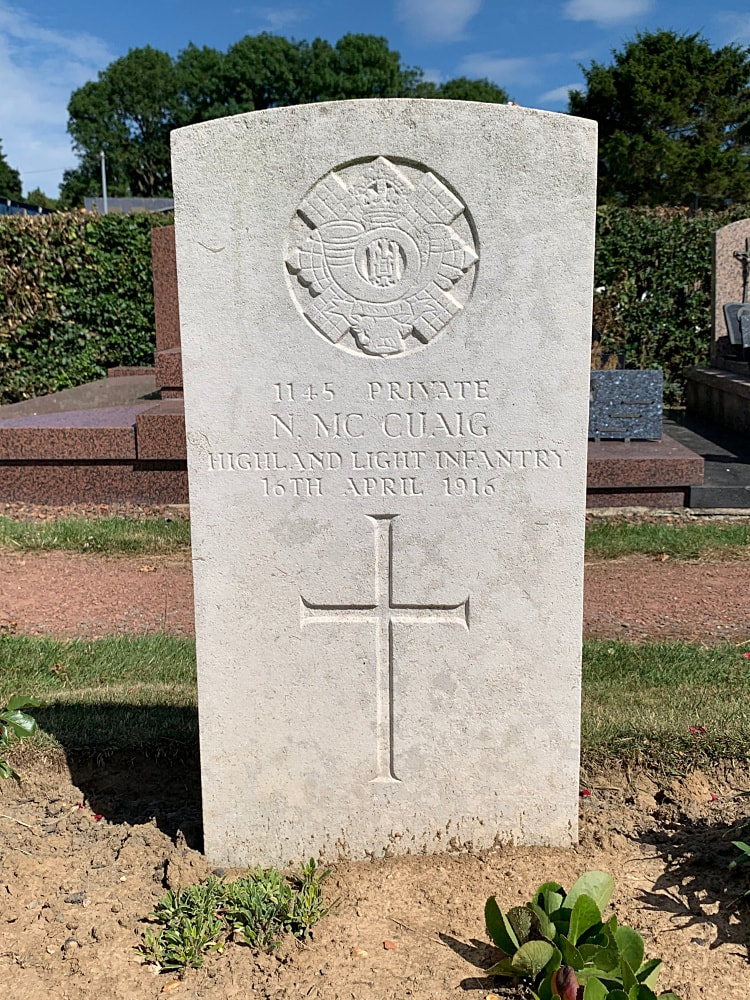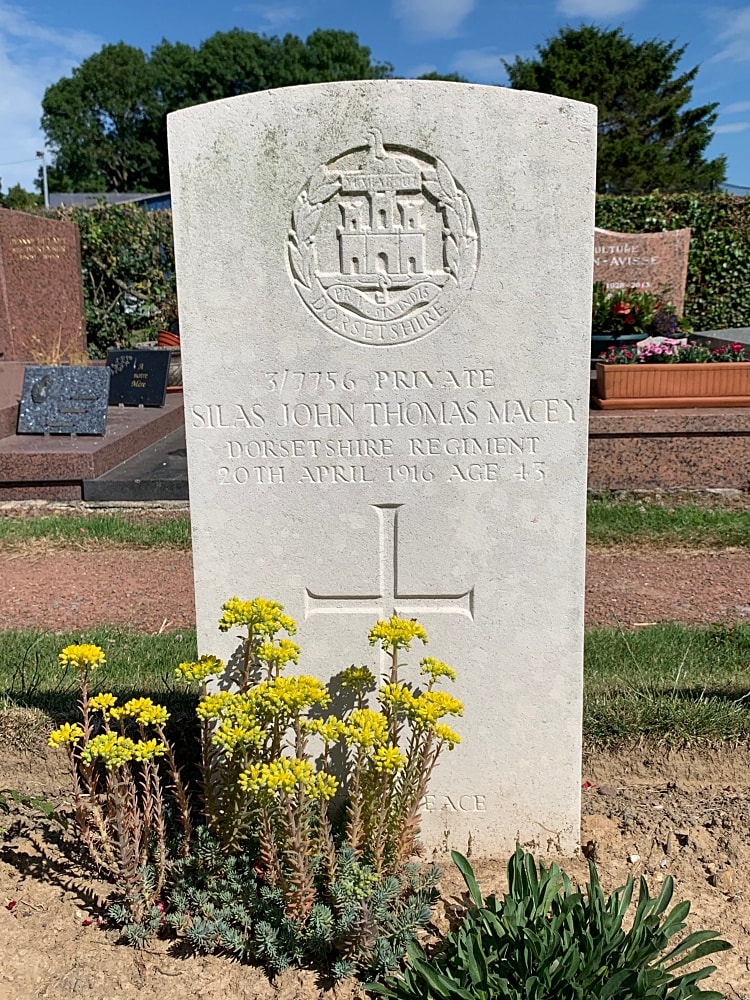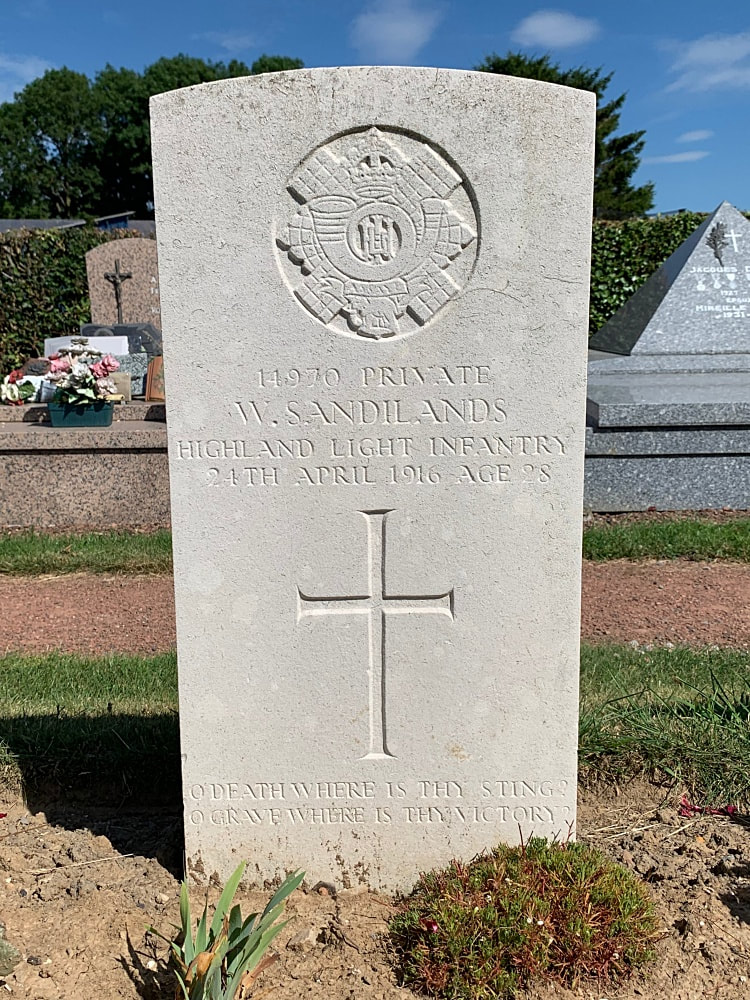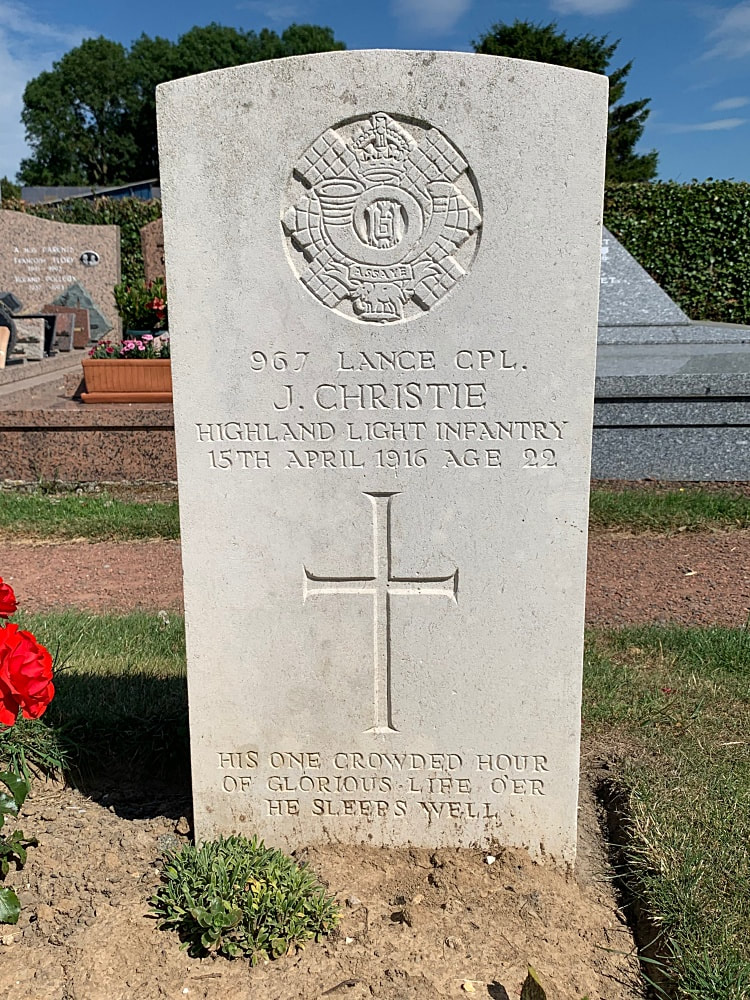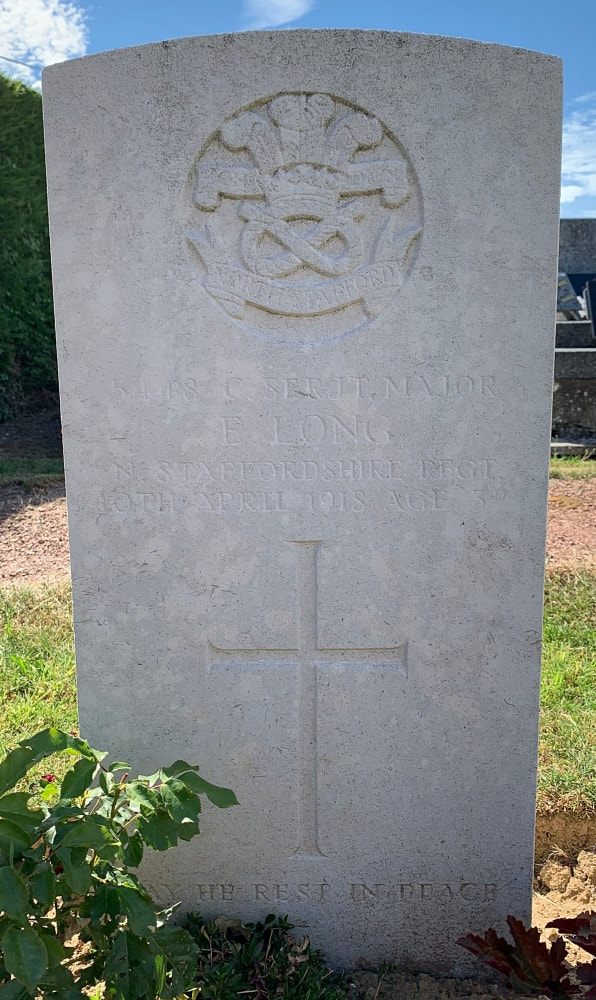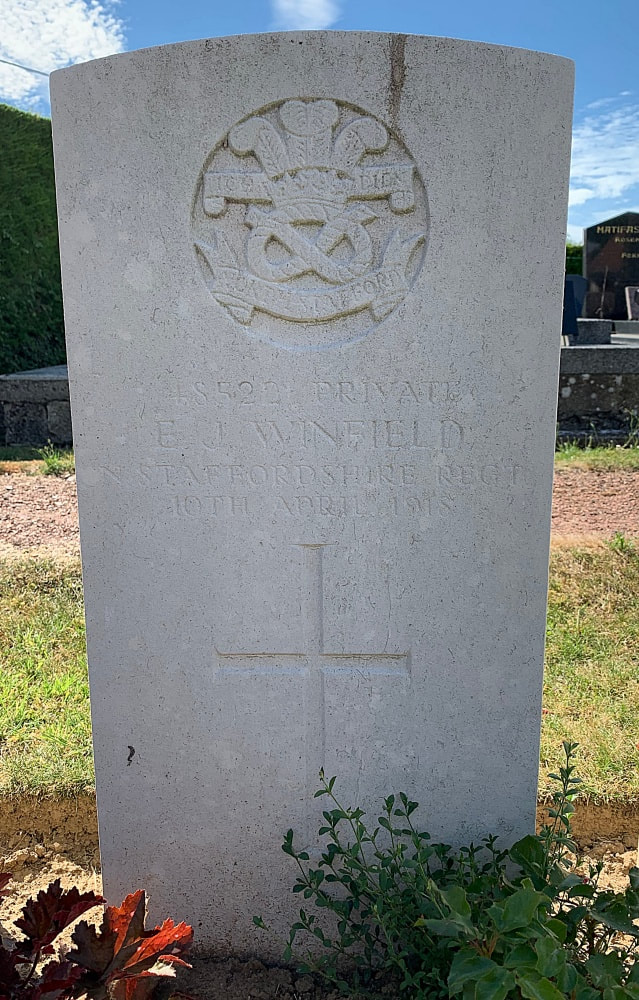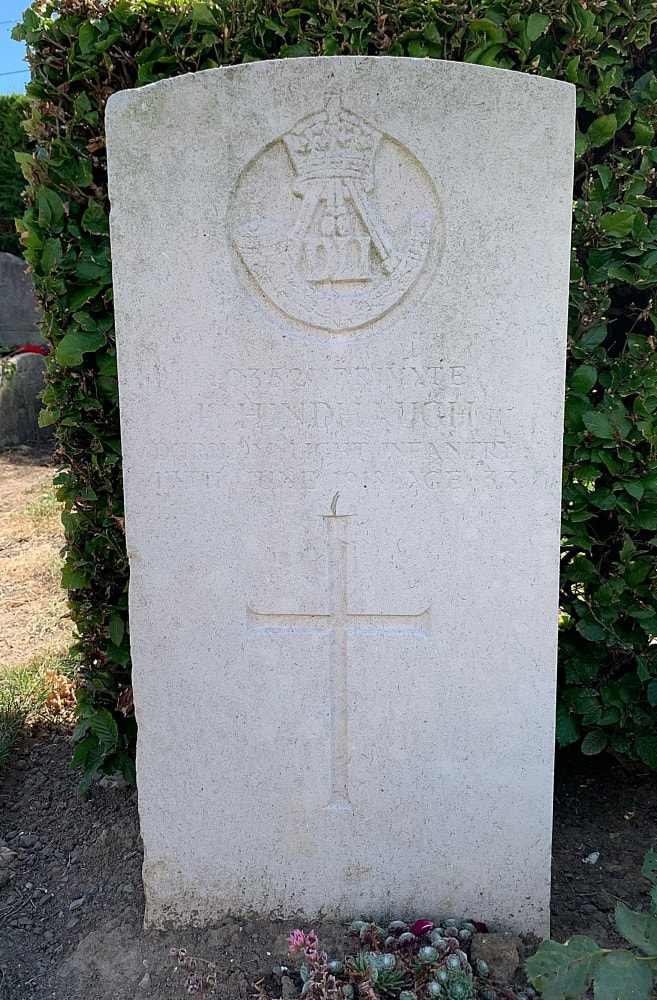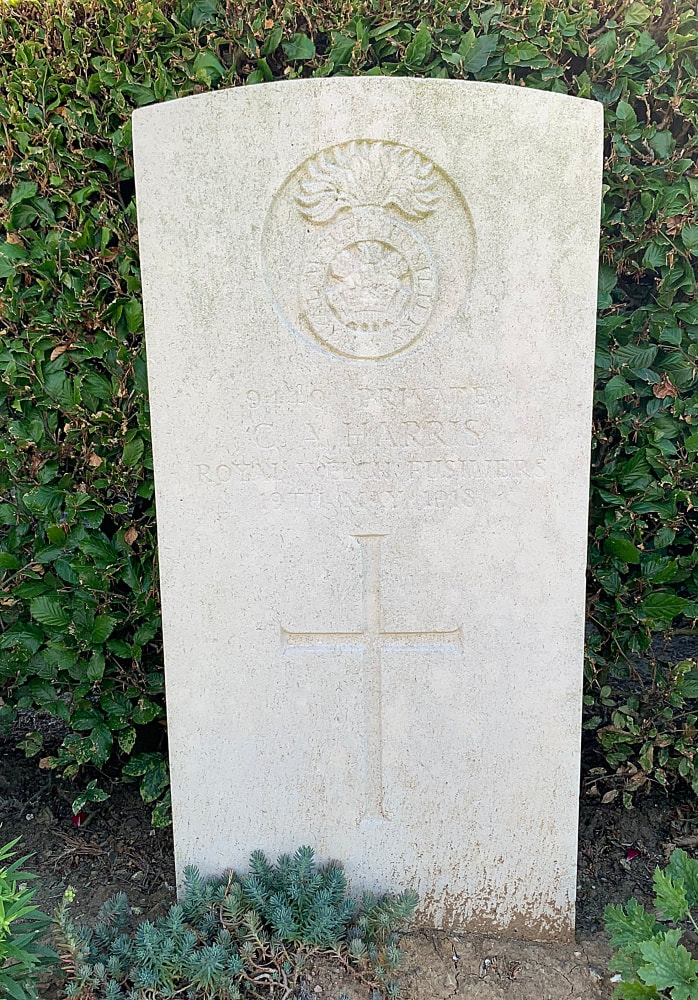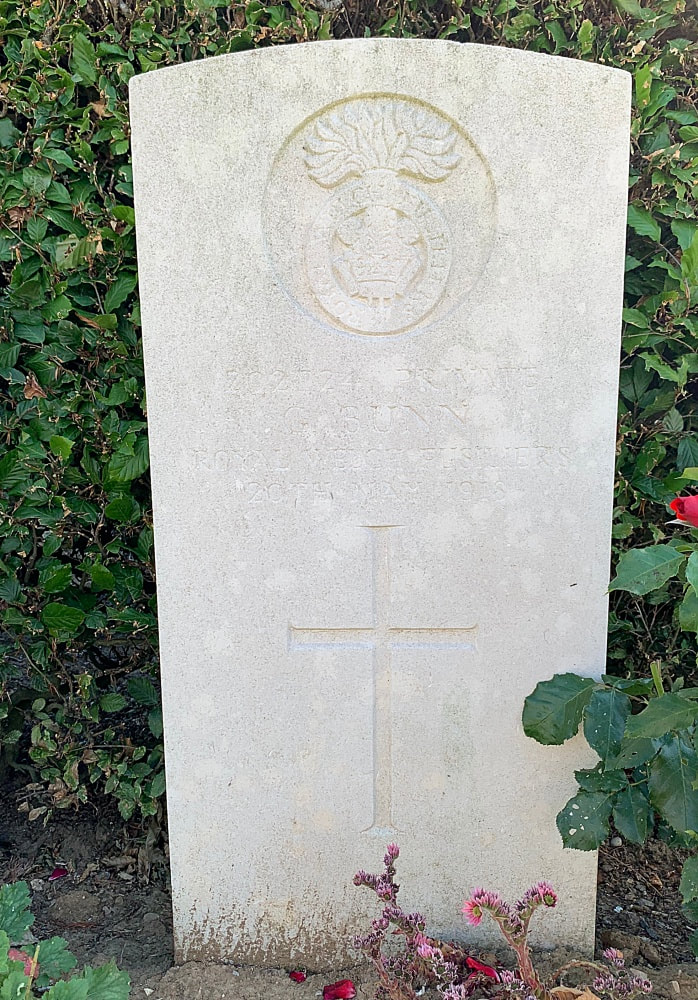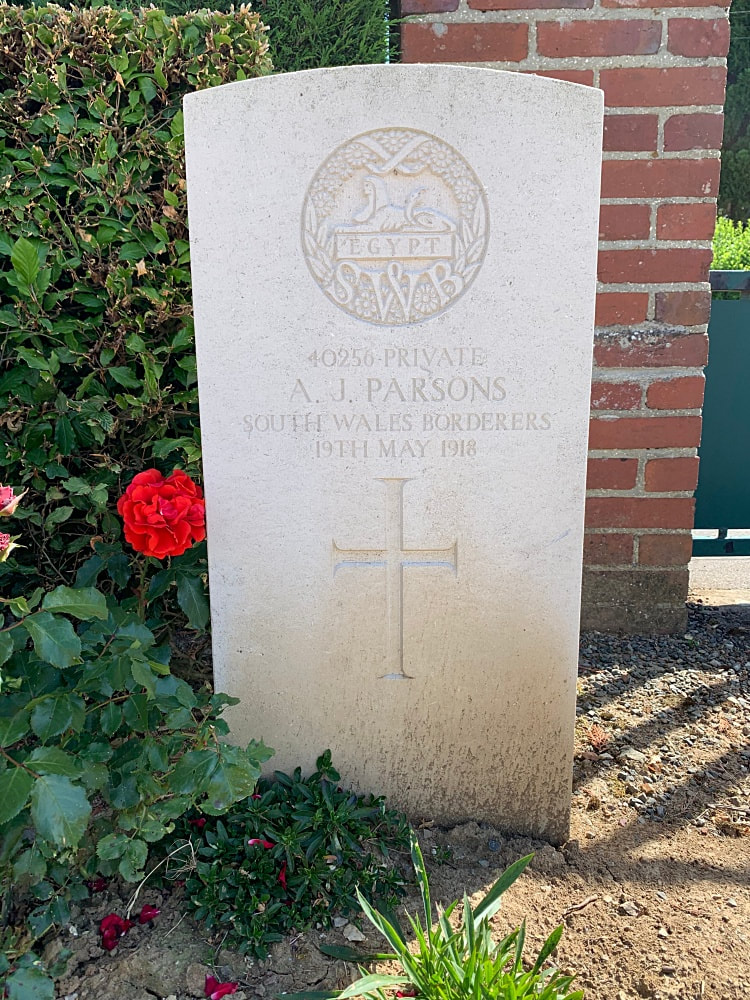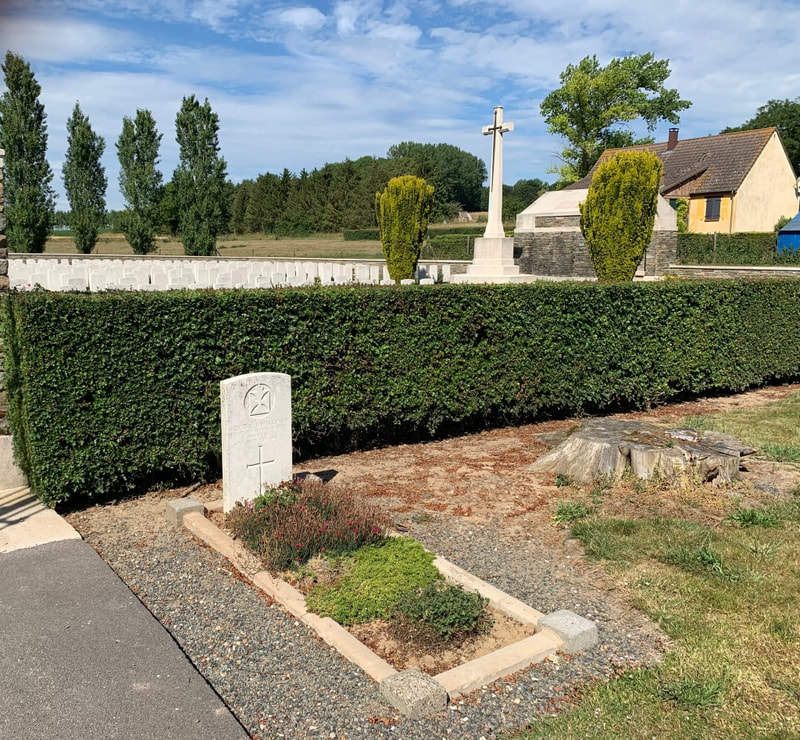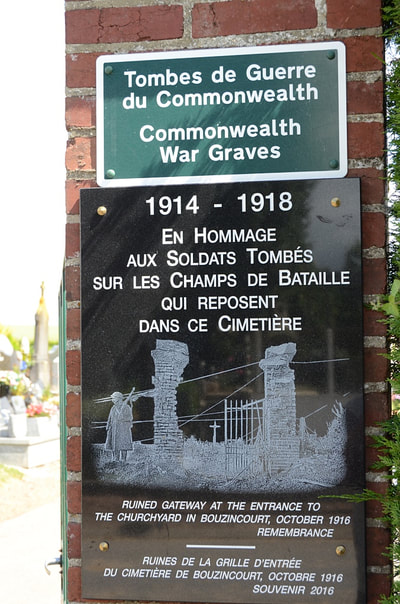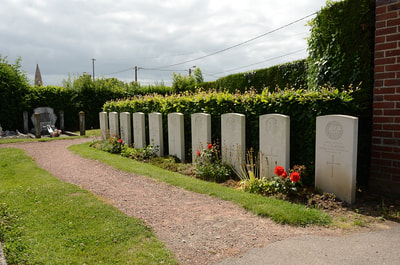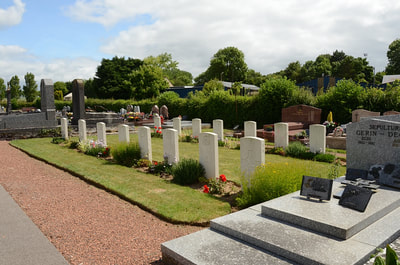BOUZINCOURT COMMUNAL CEMETERY
Somme
France
GPS Coordinates: Latitude: 50.02789, Longitude: 2.6075
Location Information
Bouzincourt is a village 3 kilometres north-west of Albert on the road to Doullens (D938). The Communal Cemetery is on the northern side of the village and is signposted on the main road (D938) through the village.
History Information
Bouzincourt was used as a field ambulance station from early in 1916 to February 1917, when the Allied line went forward from the Ancre. It was in German hands for a few days in the spring of 1918. BOUZINCOURT COMMUNAL CEMETERY was used for burials from March to July 1916 and again from April to June 1918; it contains 33 Commonwealth burials of the First World War.
Casualty Details: United Kingdom 33.
The adjoining CEMETERY EXTENSION was begun in May 1916 and used until February 1917. In the early part of July 1916, it was used not only for burials from the field ambulances but also for the interment of many soldiers killed in action and brought back from the line. The extension was reopened from the end of March 1918 until the following September and used largely by the 38th (Welsh) Division. In 1919, 20 graves were brought in from the immediate neighbourhood of Bouzincourt and in 1925, 108 more were brought in from the various Somme battlefields and from Framerville Churchyard. The extension now contains 589 Commonwealth burials and commemorations of the First World War. 108 of the burials are unidentified but there are special memorials to casualties known or believed to be buried among them.
Total Burials: 592
Identified Casualties: United Kingdom 469, Canada 7, Australia 5, Germany 2. Total 483.
Unidentified Casualties: United Kingdom 94, Australia 3, South Africa 2, New Zealand 1, Unknown 8. Total 108.
The extension was designed by Sir Reginald Blomfield.
Bouzincourt is a village 3 kilometres north-west of Albert on the road to Doullens (D938). The Communal Cemetery is on the northern side of the village and is signposted on the main road (D938) through the village.
History Information
Bouzincourt was used as a field ambulance station from early in 1916 to February 1917, when the Allied line went forward from the Ancre. It was in German hands for a few days in the spring of 1918. BOUZINCOURT COMMUNAL CEMETERY was used for burials from March to July 1916 and again from April to June 1918; it contains 33 Commonwealth burials of the First World War.
Casualty Details: United Kingdom 33.
The adjoining CEMETERY EXTENSION was begun in May 1916 and used until February 1917. In the early part of July 1916, it was used not only for burials from the field ambulances but also for the interment of many soldiers killed in action and brought back from the line. The extension was reopened from the end of March 1918 until the following September and used largely by the 38th (Welsh) Division. In 1919, 20 graves were brought in from the immediate neighbourhood of Bouzincourt and in 1925, 108 more were brought in from the various Somme battlefields and from Framerville Churchyard. The extension now contains 589 Commonwealth burials and commemorations of the First World War. 108 of the burials are unidentified but there are special memorials to casualties known or believed to be buried among them.
Total Burials: 592
Identified Casualties: United Kingdom 469, Canada 7, Australia 5, Germany 2. Total 483.
Unidentified Casualties: United Kingdom 94, Australia 3, South Africa 2, New Zealand 1, Unknown 8. Total 108.
The extension was designed by Sir Reginald Blomfield.
There are several plots throughout the cemetery
Please click on individual headstone for details if applicable
Row A
Left to Right

Second Lieutenant
Harold St. George Taylor
6th Bn., attached to 11th Bn. Border Regiment
15th April 1916, aged 26.
Row A. 4.
Son of William Frederick Taylor, M.D. and Isabella Taylor, of Preston House, Queen St., Brisbane, Queensland.
His headstone bears the inscription "Born Brisbane, Queensland, Australia March 22 1890"
Harold St. George Taylor
6th Bn., attached to 11th Bn. Border Regiment
15th April 1916, aged 26.
Row A. 4.
Son of William Frederick Taylor, M.D. and Isabella Taylor, of Preston House, Queen St., Brisbane, Queensland.
His headstone bears the inscription "Born Brisbane, Queensland, Australia March 22 1890"
Row B
Left to Right
Row C
Left to Right
Row D
Left to Right

9440 Private
Charles Arthur Harris
2nd Bn. Royal Welsh Fusiliers
19th May 1918.
Row D. 8.
Charles Arthur Harris
2nd Bn. Royal Welsh Fusiliers
19th May 1918.
Row D. 8.
Single grave next to the entrance to the Extension

Chaplain 4th Class
The Reverend Donal Vincent O'Sullivan
Army Chaplains Department
5th July 1916, aged 26.
Son of Hannah O'sullivan, of 6, High St., Killarney, and the late D. F. O'Sullivan.
His headstone bears the inscription "Killarney, Ireland"
Donal was killed in action during the attack on Bouzincourt at the Somme. He was killed by a shell, which exploded beside him when he was giving the Last Rites to a wounded soldier (who survived the war) outside the Advanced Dressing Station of the 75th Field Ambulance.
The Rev C.T. McGuinness of the 76th Ambulance Brigade wrote that Fr O'Sullivan was quite fearless and would face any danger to give the sacraments to the wounded and dying. O'Sullivan was the chaplain to 1st Battalion Royal Irish Rifles but seconded to the Loyal North Lancastrian Regiment at time of death.
The Battalion War Diary recorded his death and stated:
"This is a loss which both Officers and men of the Battalion will feel deeply.
(Woose Find a Grave)
The Reverend Donal Vincent O'Sullivan
Army Chaplains Department
5th July 1916, aged 26.
Son of Hannah O'sullivan, of 6, High St., Killarney, and the late D. F. O'Sullivan.
His headstone bears the inscription "Killarney, Ireland"
Donal was killed in action during the attack on Bouzincourt at the Somme. He was killed by a shell, which exploded beside him when he was giving the Last Rites to a wounded soldier (who survived the war) outside the Advanced Dressing Station of the 75th Field Ambulance.
The Rev C.T. McGuinness of the 76th Ambulance Brigade wrote that Fr O'Sullivan was quite fearless and would face any danger to give the sacraments to the wounded and dying. O'Sullivan was the chaplain to 1st Battalion Royal Irish Rifles but seconded to the Loyal North Lancastrian Regiment at time of death.
The Battalion War Diary recorded his death and stated:
"This is a loss which both Officers and men of the Battalion will feel deeply.
(Woose Find a Grave)

